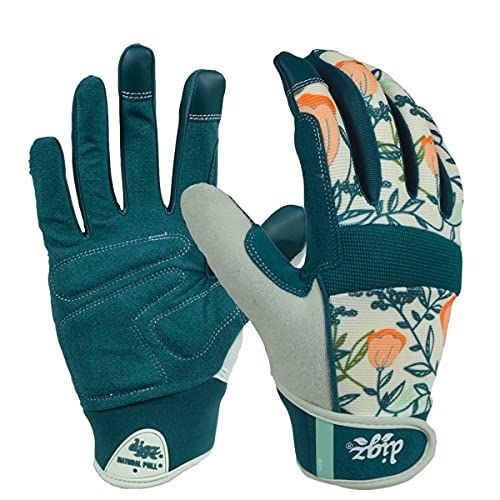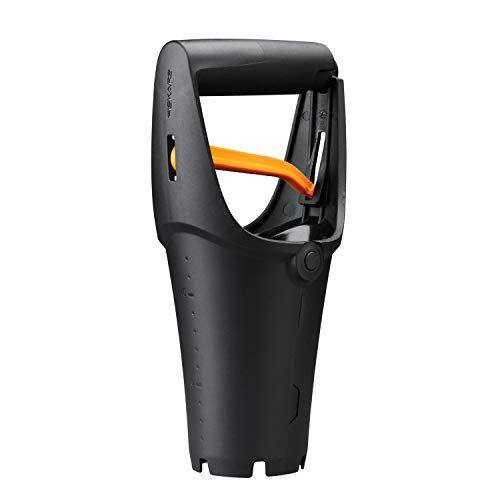How and When to Plant Tulips
Even if you have plenty of winter-friendly plants in your garden the months of gloomy weather can feel endless. Perhaps that’s why we love tulips so much: They’re a sign that spring has finally arrived!
With their stately presence, these elegant spring flowers add vivid color and splendor to garden beds large and small. “They come in a range of colors, bloom times, and heights from 4 to 30 inches tall,” says Jo-Anne van den Berg-Ohms, CEO of John Scheepers Beauty from Bulbs and Van Engelen Wholesale Flower Bulbs. “Because of the sheer number of tulips available, you can keep your garden looking fresh and interesting every year when you change up your display.”
Here’s what else you need to know about how and when to plant tulip bulbs:
What kind of tulips should I grow?
One of the ways of classifying tulips is by when they bloom and how long the blooms last. Thus, you’ll find early, mid and late season tulips. We recommend planting a variety of types to get the most impact all season long.
You’ll also find them classified by their appearance. For example, parrot tulips have fringed or scalloped petals and bright colors (like an exotic bird), while lily tulips are shaped more like, well, lilies than classic tulip blooms. Whether you choose traditional or exotic-looking flowers is up to you!
Are tulips perennials?
“Tulips are not, by nature, perennials,” says van den Berg-Ohms. “Some types may come back for subsequent years, but the blooms will become less spectacular, and fewer, and eventually they’ll peter out.” If you insist on trying to get your tulips to rebloom consider Giant Darwin hybrids, which are more likely to come back than other types because of their strong genetics in breeding. Though they’re more likely than other bulbs to return, even they won’t always come back.
Some other kinds of tulip bulbs “naturalize,” meaning the plants make baby bulbs, or bulblets, off the mother bulb. Mostly only species tulips (as opposed to hybrid tulips) will do this, and only if they’re happy and in a good spot, says van den Berg-Ohms.
If you want to give your plants the best shot at returning, you can improve their chances by allowing the stem and foliage to die back naturally until it can be raked away; don’t cut it back prematurely. The foliage needs to max its chlorophyll production through photosynthesis to put energy into producing blooms next year.
When should I plant tulips?
While it may be tempting to add “planting tulips” to your spring gardening list, it’s actually not the right time to plant the bulbs. Tulips require 10 to 14 weeks of chilling time, or cold temperatures, to bloom well. That means they tend to grow best in USDA Hardiness zones 3 to 7. (Find your zone here.) In warmer regions, such as zone 8, giant Darwin hybrids tend to do better than many other types.
You’ll find tulips everywhere for sale in the fall, but if you’re looking for a specific type, color or form, it’s smart to pre-order from specialty nurseries online. They have a much larger selection and typically will hold your bulbs to ship until it’s time to plant in your region. Also, look for bulbs that are measured 12 cm (about 4 1/2 to 5 inches) or larger. Size does matter when it comes to tulip bulbs, says van den Berg-Ohms. (Bulb sizes are usually specified in the description.)
Plant tulips in the fall, as you do other spring-flowering bulbs, when the ground is about 55°F. Depending on where you live, that’s typically mid- to late-fall.
A basic rule is to plant after nighttime temperatures have been in the 40s for two weeks, says van den Berg-Ohms. You can plant later—say, if you forgot to plant or didn’t get around to it in fall—as long as you can dig into the ground. But don’t do it any later than January or the bulbs won’t get sufficient chilling time to bloom.
How do you plant tulips?
For starters, make sure to plant bulbs in masses, rather than one bulb here and another there. This will give you the most visual impact. Find a location that gets at least 6 hours or more of sun per day. Some shade is okay and can even help tulips last longer in warmer climates, but too much will prevent growth.
Plant each type at its recommended depth. The packaging should specify what that is, but generally, most hybrid tulips need about 6 to 8 inches, and species tulips, which should only be planted about 4-6 inches deep.
Use a trowel to dig a hole, or a hoe or plowing tool to create a furrow if you’re working a large area. Either way, plan to plant your tulips directly into the ground: they don’t tend to do well in pots as the bulbs are less protected from temperature spikes, which they don’t like, says van den Berg-Ohms.
Cover the bulbs with soil, tamp down, then broadcast a granular organic fertilizer such as 5-10-5 or 4-10-6 (here’s how to understand fertilizer numbers) over the surface as if you’re spreading birdseed. Feeding now will encourage development of a mature root system, says van den Berg-Ohms. You can feed again when the sprouts first appear in spring. Finally, if the bulbs are a type that may return, fertilize one last time when the flowers start to die (this doesn’t apply if the bulbs are one-season-and-done types).
How do I protect tulips from rodents?
Unfortunately, many rodents, including chipmunks, moles, voles and squirrels, find tulip bulbs irresistible and will chow down so you have nothing left to bloom next spring. You can attempt to protect them by encasing them in a “cage” made of chicken wire underground, or you can place chicken wire over the top of your planting area, says van den Berg-Ohms.
You also can plant less tasty-bulbs, such as narcissus or alliums, which rodents don’t like, in an area around the tulip bulbs to throw them off. Repellants may work (marginally), though they may need reapplied after a rain.
To be honest, some rodents will simply power through and eat your bulbs anyhow. Do your best, and try to plant more than you need. And remember: This is simply what nature does. (Here are 50 meditation quotes to help you find inner peace.)
If tulips just don’t work, try planting bulbs such as snowdrops, daffodils, alliums or hyacinths, which garden visitors tend to leave alone.
Arricca SanSone has written about health and lifestyle topics for Prevention, Country Living, Woman’s Day, and more. She’s passionate about gardening, baking, reading, and spending time with the people and dogs she loves.






